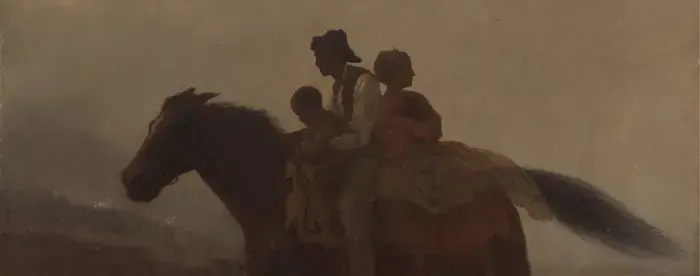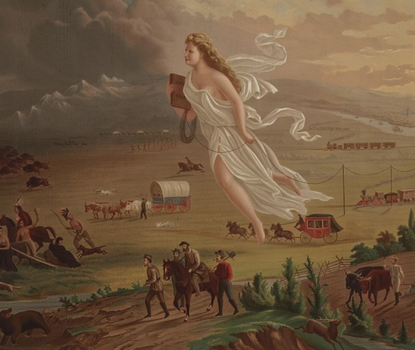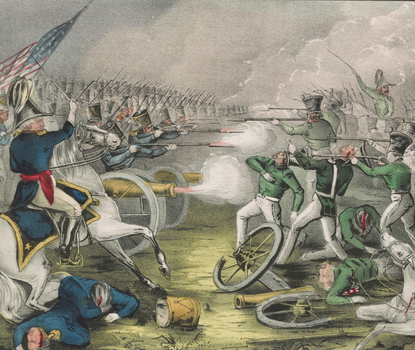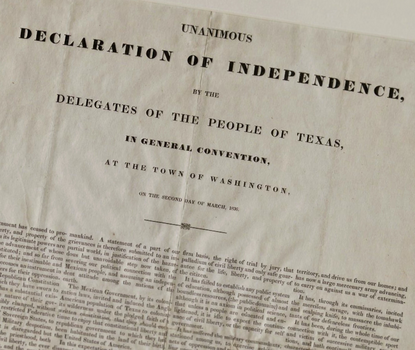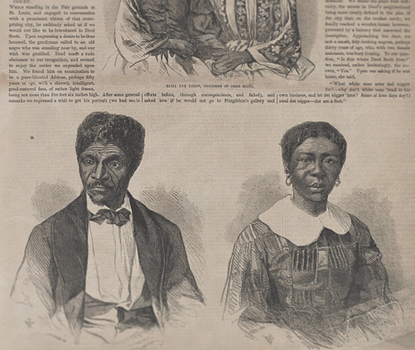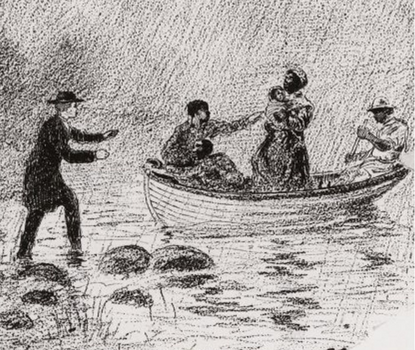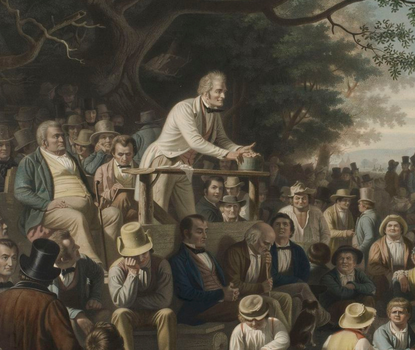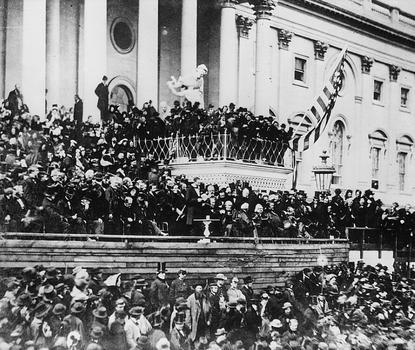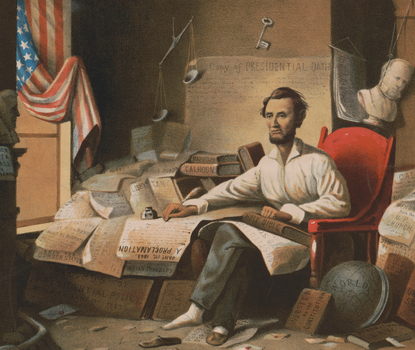As the nation expanded and its population grew, regional tensions, especially over slavery, led to a civil war—the course and aftermath of which transformed American society. Topics may include
- Manifest Destiny
- The Mexican–American War
- Attempts to Resolve Conflicts over the Spread of Slavery
- The Election of 1860 and Southern Secession
- The Civil War
- Reconstruction
Image Source: A detail from A Ride for Liberty—The Fugitive Slaves, a painting by Eastman Johnson, ca. 1862. (Brooklyn Museum)
